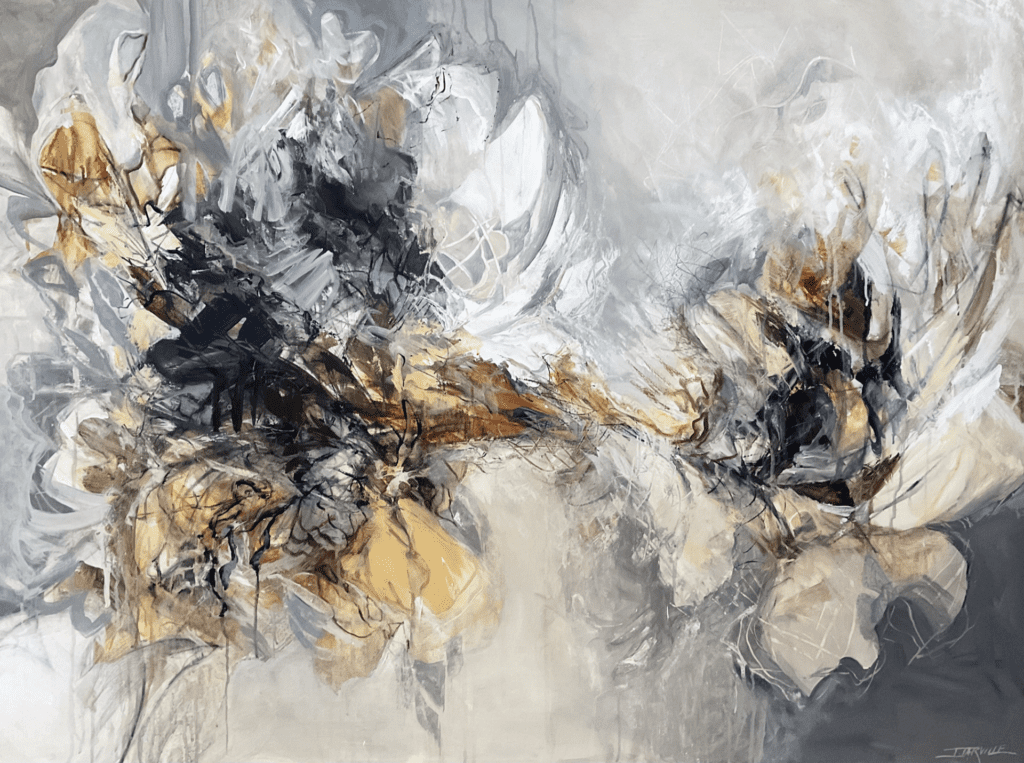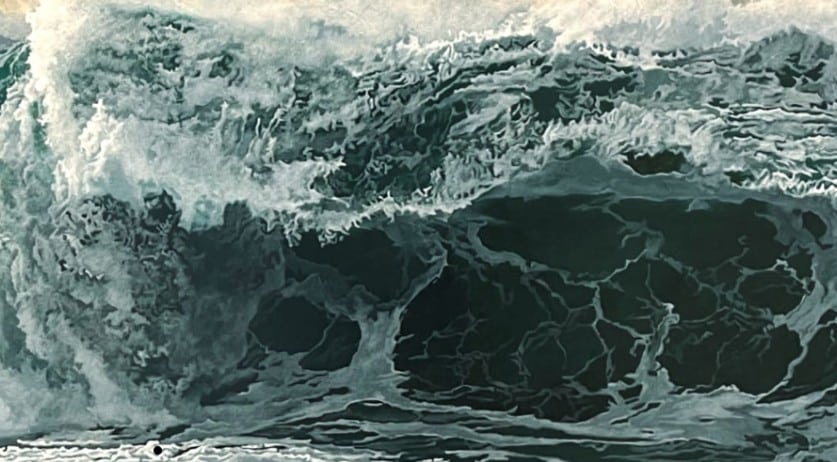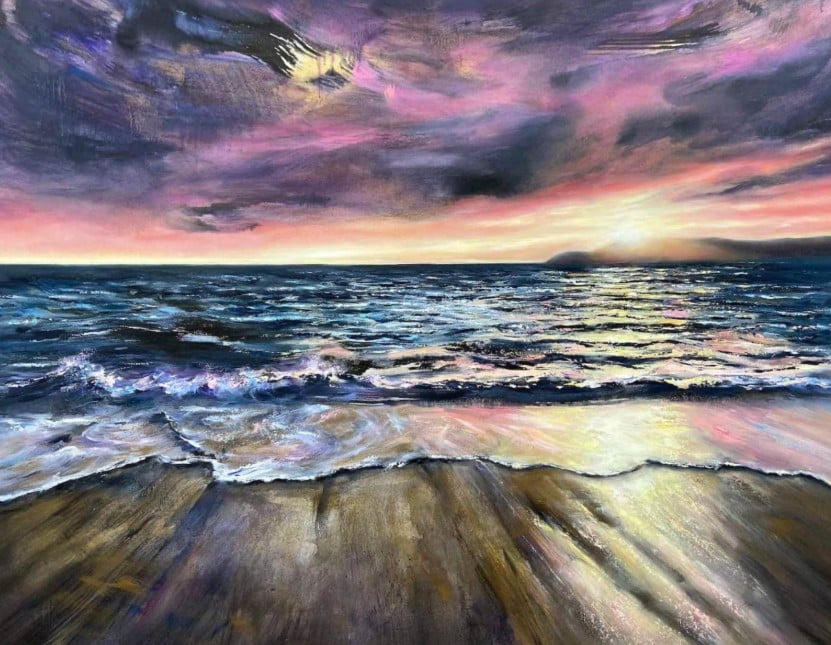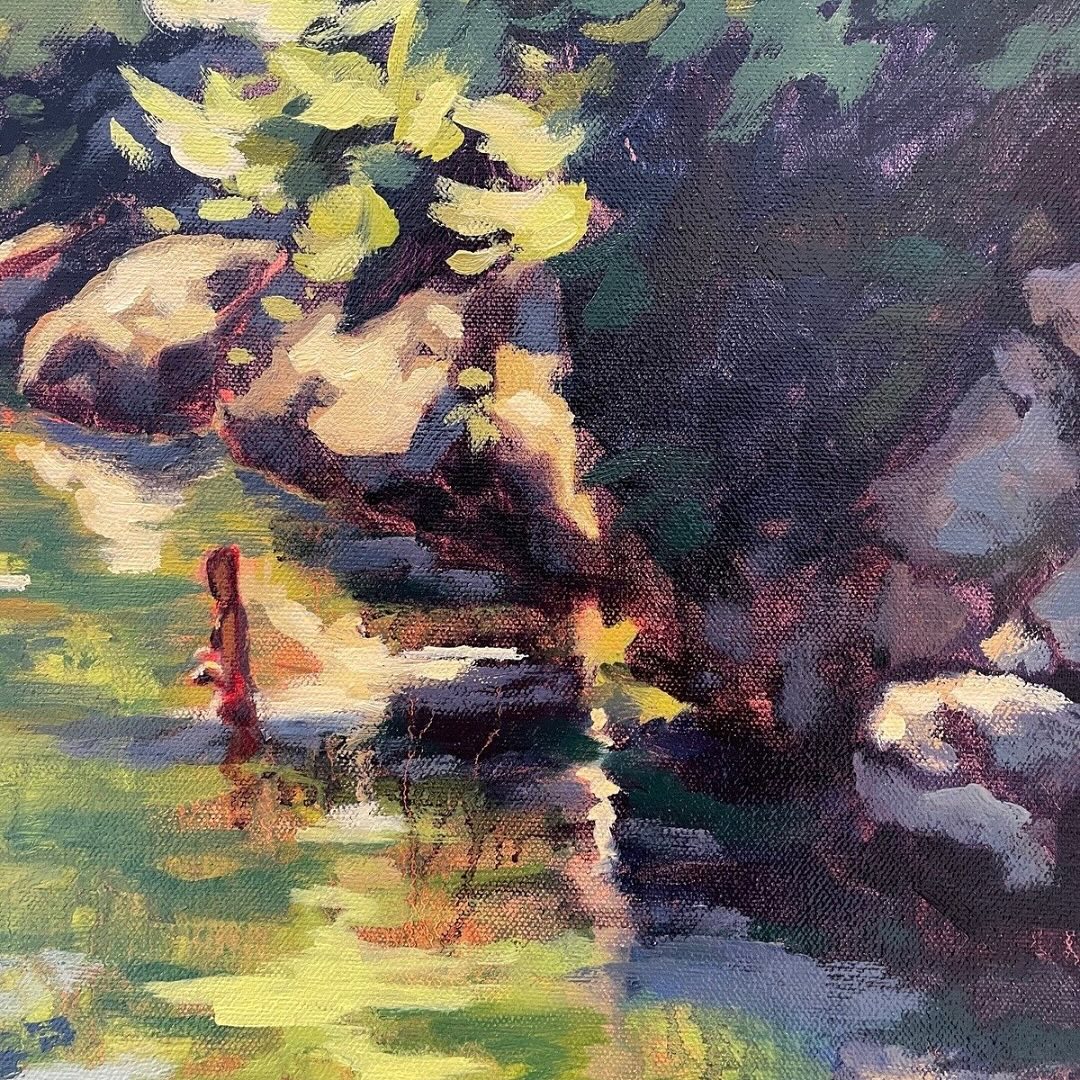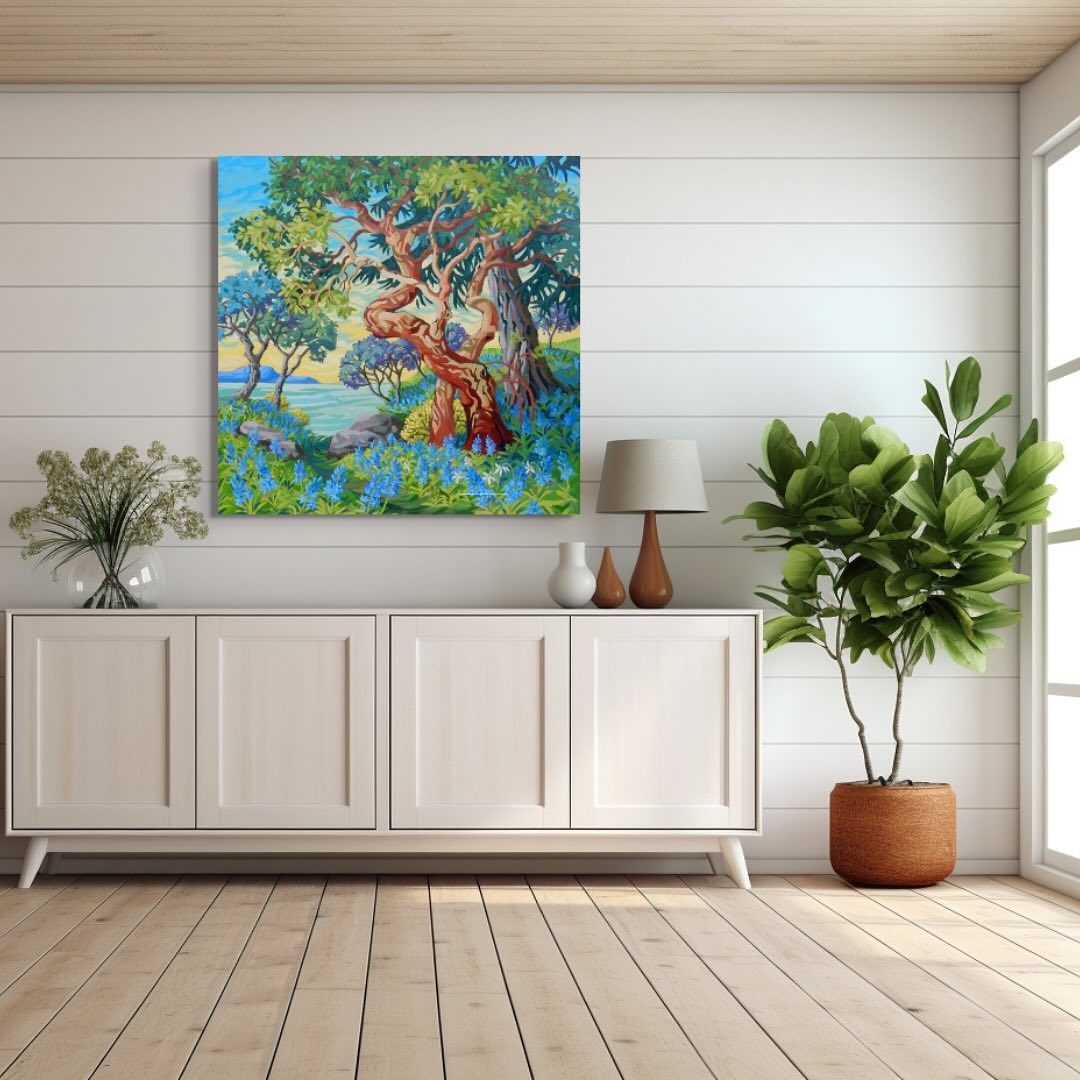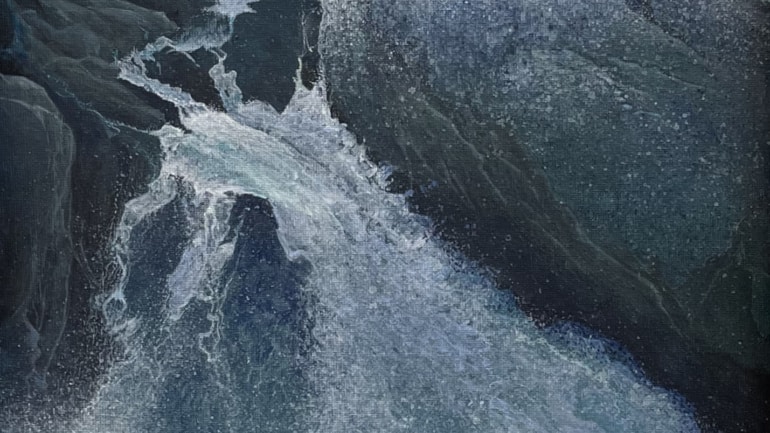In recent years, contemporary art has surged in popularity in Vancouver, Canada, becoming a defining feature of the city’s cultural landscape. Vancouver, with its vibrant arts community, serves as a beacon for contemporary artists, collectors, and investors alike. The city’s contemporary art scene is thriving, driven by innovative galleries like Ian Tan Art Gallery, which provide both local and international exposure to emerging and established artists.
Contemporary art, with its diverse styles and ever-evolving mediums, is more accessible than ever before. From bold, thought-provoking installations to interactive digital art, Vancouver has embraced this fluidity, offering a dynamic space for both collectors and art enthusiasts. The combination of cultural diversity, economic growth, and a young, creative population has made Vancouver an ideal location for contemporary artists to experiment, thrive, and establish themselves in the global art market.
The demand for contemporary art in Vancouver is also evident in the growing number of art fairs, exhibitions, and public art installations across the city. The rise of these events, along with the city’s increasing visibility on the global stage, highlights the central role contemporary art now plays in Vancouver’s cultural and economic identity.
Why Understanding the Value of Contemporary Art Matters for Collectors and Investors in Vancouver
For both seasoned collectors and first-time investors, understanding the value of contemporary art is essential. Contemporary art isn’t just about personal enjoyment; it is also an investment that can appreciate significantly over time. As Vancouver’s art market grows, knowing how to assess the value of a piece can help you make informed decisions, whether you’re adding to a collection or looking to invest in emerging talent.
Investors and collectors must understand that contemporary art’s value is not solely driven by aesthetics; it is influenced by a range of factors such as an artist’s reputation, the rarity of the work, and market trends. In Vancouver, the value of contemporary art is also affected by regional tastes and local art history. This knowledge can help buyers navigate the complexities of the Vancouver art market, ensuring that they acquire works that not only hold artistic merit but also offer potential for financial growth.
What Defines Contemporary Art? Exploring the Meaning and Scope of Contemporary Art
Contemporary art refers to the art produced in the present era, typically after the 1940s, with an emphasis on modern techniques, concepts, and materials. It reflects the world we live in, responding to current social, political, and technological trends. The term “contemporary” means that the art is reflective of our time, often pushing boundaries and challenging traditional ideas of what art can be.
In Vancouver, contemporary art spans a wide range of styles, from abstract expressionism to conceptual and installation art. It often incorporates unconventional materials, multimedia formats, and digital technology. Artists working in this genre are known for experimenting with new media, blurring the lines between visual art, performance, and digital experiences. As a result, contemporary art can be challenging to define, as it embraces a fluid, ever-changing nature that mirrors the evolving world around it.
How Contemporary Art Differs from Traditional Art Styles
Unlike traditional art forms such as classical painting or sculpture, contemporary art is characterized by its diversity and innovation. Traditional art often adhered to established techniques and subjects, with the aim of representing realistic or idealized depictions of the world. In contrast, contemporary art is less concerned with realistic representation and more focused on exploring new concepts, expressions, and mediums.
One of the key differences lies in the use of space, time, and technology. Contemporary artists may use installations, sound, video, and performance as integral parts of their work, creating immersive experiences for the viewer. The focus is on interaction, challenging the viewer to think critically and engage with the work in a personal way. This shift from object-based to experience-based art has made contemporary art more accessible to a broader audience, including those who may not traditionally engage with fine art.
Key Characteristics That Make Contemporary Art Unique
What sets contemporary art apart is its emphasis on individual expression and social commentary. Whether it’s addressing political issues, environmental concerns, or personal identity, contemporary artists often use their work as a means of dialogue with the world around them. In Vancouver, where diversity and inclusivity are key cultural values, contemporary artists frequently explore themes of migration, community, and social justice.
Another defining characteristic of contemporary art is its multidisciplinarity. Artists may combine painting with sculpture, video with installation, or digital technology with performance, creating cross-media works that challenge the boundaries of traditional art forms. This experimentation and fusion of disciplines keep contemporary art fresh and exciting, continually pushing the limits of what can be considered art.
The process-oriented nature of contemporary art is also a distinguishing feature. Rather than focusing solely on the finished product, many contemporary artists emphasize the process of creation, inviting viewers to engage in the unfolding of the artwork over time. This dynamic process invites interpretation, making contemporary art an evolving conversation between the artist, the artwork, and the audience.
The Role of Artist Reputation in Determining Art Value
The reputation of the artist is one of the most influential factors in determining the value of contemporary art. In Vancouver’s dynamic art scene, an artist’s career trajectory significantly impacts the demand for their work. Artists who have gained recognition through gallery exhibitions, media coverage, and public commissions generally see a higher demand for their art, which drives up its value. The more successful an artist becomes in garnering attention from critics, collectors, and institutions, the more desirable their works become in the marketplace.
Artist careers typically progress through distinct phases: emerging, mid-career, and established. Emerging artists, still building their recognition, tend to produce affordable works, but these pieces often show great potential for future value appreciation. Mid-career artists have a more defined market presence, with their works gaining a larger audience. Established artists, who have achieved both critical and financial success, command significantly higher prices for their works. In Vancouver, artists like Lesley Anderson and Gary Aylward have seen their art’s value rise as their careers have progressed, offering collectors and investors a glimpse of how reputation influences pricing.
Emerging artists represented by Ian Tan Art Gallery are especially appealing to collectors, as their works may become highly valuable as their reputation grows. For instance, artists such as Tiffany Blaise and Mandy Boursicot represent exciting opportunities for investors looking to acquire pieces before their value increases with greater recognition.
Notable Contemporary Artists from Vancouver and Their Market Influence
Vancouver is home to a wealth of talented contemporary artists who have made their mark both locally and internationally. Artists like Wim Blom Estate, known for his evocative works that explore themes of memory and time, and Chanel Cha, whose art blends traditional techniques with modern concepts, have contributed to Vancouver’s growing prominence on the global art stage. These artists not only shape the city’s contemporary art scene but also influence the broader art market.
The value of art produced by these Vancouver artists is often tied to their recognition in both local and international markets. Established Vancouver artists frequently see their works fetching premium prices at auctions and galleries. For example, David Edwards and Kristofir Dean, whose works explore contemporary social and environmental issues, have seen increased demand for their art, which has elevated their market value.
The rise of emerging artists such as Judy Cheng and Tim Fraser also presents opportunities for collectors to acquire pieces before their value soars. Galleries like Ian Tan Art Gallery continue to support these artists, helping them build recognition while simultaneously providing a platform for collectors to access their work before it becomes widely known.
The Importance of Gallery Representation and Exhibition History
Gallery representation plays a pivotal role in the value of contemporary art. Artists who are represented by reputable galleries benefit from professional curatorial support, strategic exposure, and networking opportunities that allow their work to reach a wider audience. Galleries with established reputations help elevate an artist’s profile, making their works more desirable to collectors and investors. Artists represented by Ian Tan Art Gallery, such as Peter Harris and Vanessa Lam, often experience increased visibility in the market, which in turn raises the demand for their art.
Exhibition history is another crucial factor in determining the value of an artist’s work. Artists who have exhibited their work in prestigious institutions or renowned art fairs are more likely to see a rise in the demand for their pieces. For example, artists like David Pirrie and Jeanette Jarville, who have showcased their work in notable venues and exhibitions, tend to have their art appreciated by a broader, more diverse audience. This increased exposure helps secure their place in the art world and elevates the perceived value of their art.
Understanding an artist’s exhibition history is vital for collectors and investors, especially in Vancouver, where the local art scene is vibrant and competitive. By tracking artists who exhibit in venues like the Vancouver Art Gallery or participate in global art fairs, buyers can assess an artist’s potential for long-term success and, consequently, make more informed decisions about their art investments.
Rarity and Exclusivity: Why Limited Editions Are More Valuable
The rarity of a work is one of the most significant factors in determining its value in the contemporary art world. Limited editions and one-of-a-kind artworks are inherently more valuable than mass-produced pieces because they are exclusive and cannot be easily replicated. A limited edition refers to a set number of copies of a particular artwork, whether it’s a painting, sculpture, print, or digital creation. Once the edition is sold out, no more of that work will be produced, which creates a sense of scarcity and exclusivity.
In contrast, one-of-a-kind works such as original paintings or sculptures are unique in every sense, with no copies made. These pieces are particularly coveted by collectors because of their inherent individuality and the artist’s personal touch. In Vancouver, collectors gravitate toward acquiring such exclusive works as they appreciate in value over time due to their rarity and the prestige associated with owning something truly unique.
The Relationship Between Scarcity and Demand in Contemporary Art
The relationship between scarcity and demand plays a central role in shaping the value of contemporary art. As with many luxury goods, the law of supply and demand directly applies: when an artwork is rare or hard to obtain, demand rises, and so does its value. This principle is particularly significant in Vancouver, where art collectors are becoming increasingly aware of the potential return on investment in rare and exclusive pieces.
Collectors often seek out limited editions or one-off pieces because they represent an opportunity to own something not available to the broader public. This exclusivity adds not only to the monetary value of the piece but also to its cultural cachet. Limited editions, while still accessible to a certain group of buyers, create a market of exclusivity, appealing to those who want to own a piece of art that others cannot easily replicate.
How the Rarity of Contemporary Art Affects Its Pricing in Vancouver
In Vancouver, contemporary art is an essential component of both the cultural and economic fabric of the city. The rarity of a piece significantly affects its pricing, particularly for works by well-established artists or those with a loyal following. Limited editions, which are produced in small, finite quantities, often command higher prices due to their exclusivity. Works by artists who have achieved recognition within Vancouver’s thriving art scene, such as Lesley Anderson and Gary Aylward, see their limited edition pieces appreciate in value as their reputations grow.
The scarcity factor is particularly pronounced for artists whose work has garnered international attention. For example, a limited edition piece by Tiffany Blaise or Mandy Boursicot, once priced modestly, could dramatically increase in value as the artist’s career gains global momentum. As more buyers begin to recognize the potential for long-term value growth, the demand for these rare pieces surges.
Market trends also influence the value of scarce works. As local artists like Kristofir Dean and Peter Harris gain more visibility and attention, their works, whether limited editions or one-of-a-kind pieces become more desirable to collectors. In Vancouver, limited edition prints and rare works from local artists represented by galleries such as Ian Tan Art Gallery have consistently fetched premium prices at auctions and galleries. The recognition of these artists as key figures in Vancouver’s contemporary art scene contributes to the increasing market value of their scarce works, ensuring that prices for rare contemporary art continue to rise over time.
Market Trends and Their Influence on Art Valuation
How Art Market Trends Shape the Value of Contemporary Art
Art market trends are a reflection of cultural and economic shifts that impact the demand for contemporary art. These trends can be influenced by various factors, such as changing tastes, technological advances, or shifts in societal concerns. The value of contemporary art is often tied to the cultural significance of a particular movement or theme.
In Vancouver, trends such as the growing interest in sustainability, social justice, and technology have influenced the types of artworks that are in demand. For example, art that addresses environmental issues or social activism has seen an increase in value as collectors look for works that align with their values. Additionally, the rise of digital art and NFTs (non-fungible tokens) has created new opportunities for artists and investors in Vancouver’s art market.
The Impact of Global Economic Conditions on Vancouver’s Art Market
Global economic conditions also play a critical role in shaping the art market in Vancouver. When the global economy is strong, disposable income increases, and the demand for luxury goods, including contemporary art tends to rise. Conversely, during economic downturns, collectors may scale back their purchases or focus on works by established artists whose value is more likely to remain stable.
In Vancouver, a city with a dynamic real estate market and a high cost of living, art is often seen as a safe investment during uncertain economic times. The value of contemporary art, particularly limited editions and pieces by well-established artists, tends to hold steady even when other markets experience volatility. As such, art continues to be a viable option for investors looking to diversify their portfolios and safeguard their wealth.
Local Demand for Contemporary Art: What Collectors in Vancouver Are Seeking
Vancouver’s collectors have unique tastes, and understanding what’s in demand is key to making informed art purchases. In the local market, there is a growing interest in diverse and inclusive art that reflects the multicultural nature of the city. Contemporary art that explores themes of identity, immigration, and community resonates strongly with local collectors, many of whom want their art collections to reflect their personal values and the social landscape of Vancouver.
Additionally, Vancouver’s proximity to the Pacific Rim and its connection to Asia have influenced the local art market. There is significant interest in Asian-inspired contemporary art, as well as in pieces by Asian Canadian artists. This trend has contributed to the diversification of the city’s contemporary art scene, attracting both local and international collectors who seek to acquire works that represent the global nature of Vancouver’s cultural identity.
How Contemporary Art Fairs and Auctions Influence Value
Art fairs and auctions play a significant role in determining the value of contemporary art. These events are where collectors, curators, and investors gather to discover new works, interact with artists, and place bids on coveted pieces. In Vancouver, art fairs such as Art Vancouver have become key players in showcasing contemporary art and driving up the value of artworks, especially those by established or emerging artists with high demand.
Auctions, such as those held by major houses like Sotheby’s or Christie’s, also influence the market by setting new price benchmarks for contemporary art. When a piece by a notable artist is sold for a record price at auction, it often increases the perceived value of similar works by the same artist or within the same genre. For Vancouver’s collectors, participating in or attending such events provides an opportunity to gauge the market’s direction and make investment decisions based on current trends.
The Emotional and Cultural Impact of Contemporary Art
How Personal Connections and Cultural Relevance Add Value to Contemporary Art
The emotional and cultural relevance of contemporary art is often what drives its value in the hearts and minds of collectors. Art has the power to evoke personal connections, stir emotions, and tell stories that resonate with individuals. In Vancouver, where the art community is diverse and deeply connected to the city’s cultural fabric, works that reflect local issues or personal narratives often carry significant emotional weight.
Contemporary art can serve as a reflection of cultural identity, helping to shape how we view the world and our place in it. This connection can elevate the value of a piece, particularly when it reflects themes of local culture, history, or social change that are important to the Vancouver community.
The Role of Contemporary Art in Vancouver’s Cultural Identity and Community
Contemporary art plays an important role in Vancouver’s cultural identity. It’s not just about aesthetics, it’s about engaging with the community and encouraging dialogue about the issues that matter. Whether it’s addressing social justice, environmental concerns, or multiculturalism, Vancouver’s contemporary artists are using their work to shape and define the city’s cultural narrative. Art can be an instrument for social change, and its value is often linked to its ability to spark conversation and inspire action.
In Vancouver, public art installations and community-based art projects are helping to create a more inclusive and diverse cultural landscape. The value of these artworks goes beyond their market price; they are integral to the city’s social fabric, contributing to the collective identity and cultural consciousness of the local community.
How to Evaluate the Value of Contemporary Art for Collecting and Investment
Key Factors to Consider When Appraising Contemporary Artworks
When evaluating the value of contemporary art for collecting or investment, several factors come into play:
- Artist Reputation: The artist’s career, exhibition history, and market demand significantly impact the value of their work.
- Condition and Provenance: The condition of the artwork, as well as its provenance (or ownership history), can affect its value.
- Scarcity and Edition Size: Limited edition prints or one-of-a-kind pieces generally hold higher value due to their rarity.
- Cultural and Social Relevance: Artworks that resonate with current societal issues or reflect cultural significance can increase in value over time.
- Market Trends: Keep an eye on art market trends and auction results to gauge the future value of a work.
Practical Tips for Evaluating Contemporary Art in Vancouver
To evaluate contemporary art in Vancouver, it’s important to stay informed about local galleries, exhibitions, and the artists who are gaining attention. Visiting galleries like Ian Tan Art Gallery and attending art fairs such as Art Vancouver will give you insight into current market trends and help you identify emerging artists whose work may be undervalued today but could appreciate in value.
Additionally, consulting with art appraisers and experts who specialize in contemporary art can provide valuable guidance on making informed investment decisions. These professionals can assess the quality, provenance, and market potential of a work, ensuring that you make sound choices for both enjoyment and investment purposes.
Expert Advice on Buying Contemporary Art as an Investment in Vancouver’s Market
Investing in contemporary art is both an exciting and complex venture. Experts recommend diversifying your collection by including works from a mix of established artists and emerging talents. In Vancouver, many collectors are focusing on emerging artists whose works show strong promise and have the potential to increase in value as the artists’ career progresses. By staying informed and working with trusted art dealers and galleries, you can build a collection that offers both aesthetic pleasure and potential financial return.
Conclusion
Understanding the value of contemporary art involves more than just assessing the price of a piece. From artist reputation and rarity to market trends and cultural relevance, multiple factors contribute to determining the value of contemporary artworks. In Vancouver, with its dynamic and diverse art scene, these elements are particularly important for collectors and investors who seek to build meaningful and profitable art collections. Whether you are a first-time buyer or an experienced investor, being informed about these factors will enable you to navigate Vancouver’s contemporary art market with confidence.
At Ian Tan Art Gallery, we are committed to helping art enthusiasts and collectors understand the nuances of art valuation. Our carefully curated collection of contemporary artists provides opportunities to invest in unique, rare, and valuable works that reflect the vibrant culture of Vancouver. Explore our diverse portfolio and make informed decisions about your next art investment.

